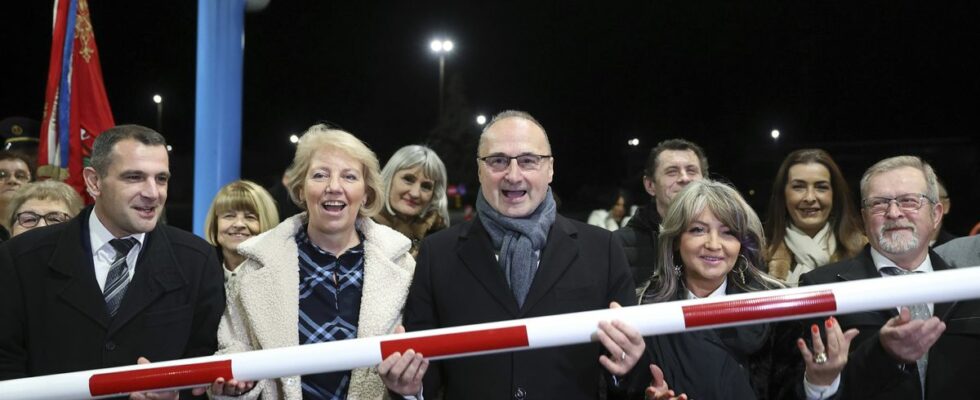The Croatia counted the hours on Saturday before switching to the euro and entering theSchengen area of free movement, two major steps for this small country which has joined theEuropean Union in July 2013. And it was at midnight that the country said goodbye to its currency, the kuna, to become the twentieth member of the euro zone. At the same time, Croatia becomes the 27th State to join the Schengen area, a vast area within which more than 400 million people can travel freely without internal border controls.
This Sunday, the President of the European Commission Ursula von der Leyen will come to Croatia to mark both events. Croatian leaders regularly stress the expected benefits for this Balkan country of 3.9 million people.
Strategic objectives
Entry into the euro zone and the Schengen area are “two strategic objectives for further integration into the EU”, insisted the conservative Prime Minister Andrej Plenkovic on Wednesday. Experts say euro changeover will help protect Croatia’s economy, one of EU’s weakest, in a world plagued by soaring inflation, a severe energy crisis and geopolitical insecurity from the start of the invasion of Ukraine by the Russia.
In November, inflation reached 13.5%, against 10% in the euro zone. Eastern European countries that are members of the EU but not of the eurozone, such as Poland or Hungary, have proven to be even more vulnerable to rising inflation. “The euro certainly brings economic stability and security”, assures Ana Sabic, an official of the Croatian Central Bank.
Fears linked to rising prices
The benefits of joining the euro will be felt by all segments of society – individuals, companies and the state – she insists. Experts cite in particular the elimination of exchange risks and better borrowing conditions in the face of economic difficulties. The euro is already very present in Croatia. About 80% of bank deposits are denominated in euros, the main partners of this Mediterranean country are in eurozone and tourism, which accounts for 20% of GDP, is supplied by a large European clientele.
Croatia has welcomed four times more tourists this year than it has inhabitants. Entry into the Schengen zone will also give a boost to tourism. Long queues at the Croatian borders with its European neighbors Slovenia and Hungary will be a thing of the past. This Sunday, 73 border posts will close. In airports, the change will take place on March 26, for technical reasons.
Schengen rules already applied
At the same time, the situation at the country’s borders with its non-EU neighbors – Bosnia, Montenegro and Serbia – will hardly change: Croatia already applies the rules of the Schengen area. The repression of illegal immigration remains a major challenge. Since the country joined the EU, it has inherited the heavy task of protecting an external land border more than 1,350 km long, most of which is with Bosnia.
Croatia is on the so-called Western Balkan route used by migrants, but also by traffickers of arms, drugs and human beings. The border with the bosnia is the most difficult to manage, due to its length, but also its uneven terrain. After the ebb in clandestine crossings linked to the health crisis, Croatia registered 30,000 illegal migrants in the first ten months of 2022, an increase of 150% compared to the same period of the previous year.
Mixed Croatians
The Croats perceive their entry into the euro and the Schengen area with mixed feelings: if they generally welcome the end of border controls, the change of currency inspires mistrust. “We are going to cry our kuna, the prices are going to explode,” laments Drazen Golemac, a 63-year-old pensioner, in Zagreb. “Nothing changes on January 1, everything has been calculated in euros for two decades anyway,” observes Neven Banic, an employee. For a long time, Croatians have counted in euros for the price of valuable goods, such as cars or apartments.

